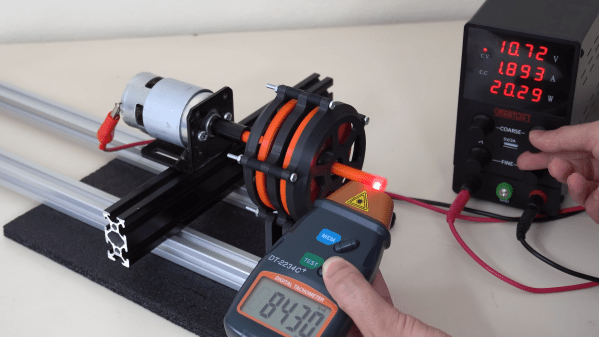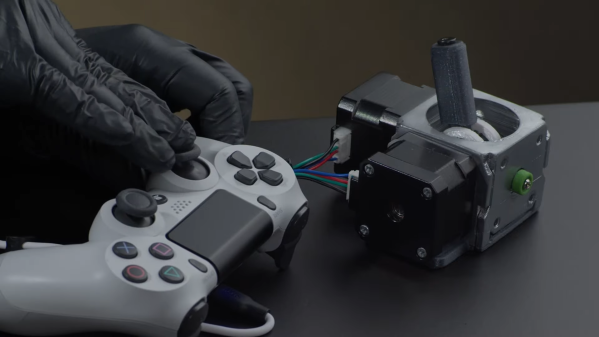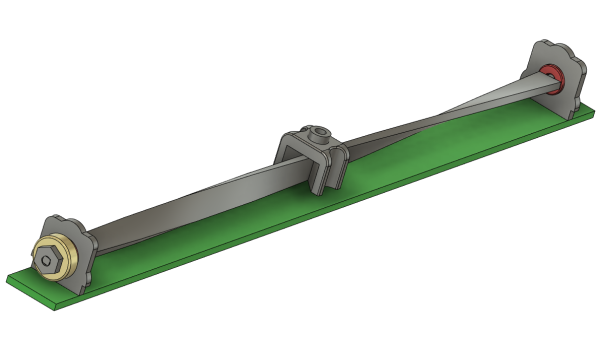Dice are about the simplest machines possible, and they’ve been used since before recorded history to generate random numbers. But no machine is so simple that a little needless complexity can’t make it better, as is the case with this mechanical spinning dice. Or die. Whatever.
Inspiration for the project came from [Attoparsec]’s long history with RPG and tabletop games, which depend on different kinds of dice to generate the randomness that keeps them going — that and the fortuitous find of a seven-segment flip-dot display, plus the need for something cool to show off at OpenSauce. The flip-dot is controlled by an array of neodymium magnets with the proper polarity to flip the segments to the desired number. The magnets are attached to an aluminum disk, with each array spread out far enough to prevent interference. [Attoparsec] also added a ring of magnets to act as detents that lock the disk into a specific digit after a spin.
The finished product ended up being satisfyingly clicky and suitably random, and made a good impression at OpenSauce. The video below documents the whole design and build process, and includes some design dead-ends that [Attoparsec] went down in pursuit of a multiple-digit display. We’d love to see him revisit some of these ideas, mechanically difficult though they may be. And while he’s at it, maybe he could spice up the rolls with a little radioactivity.
Continue reading “Spinning Magnets Do Your Dice Rolling For You”


















